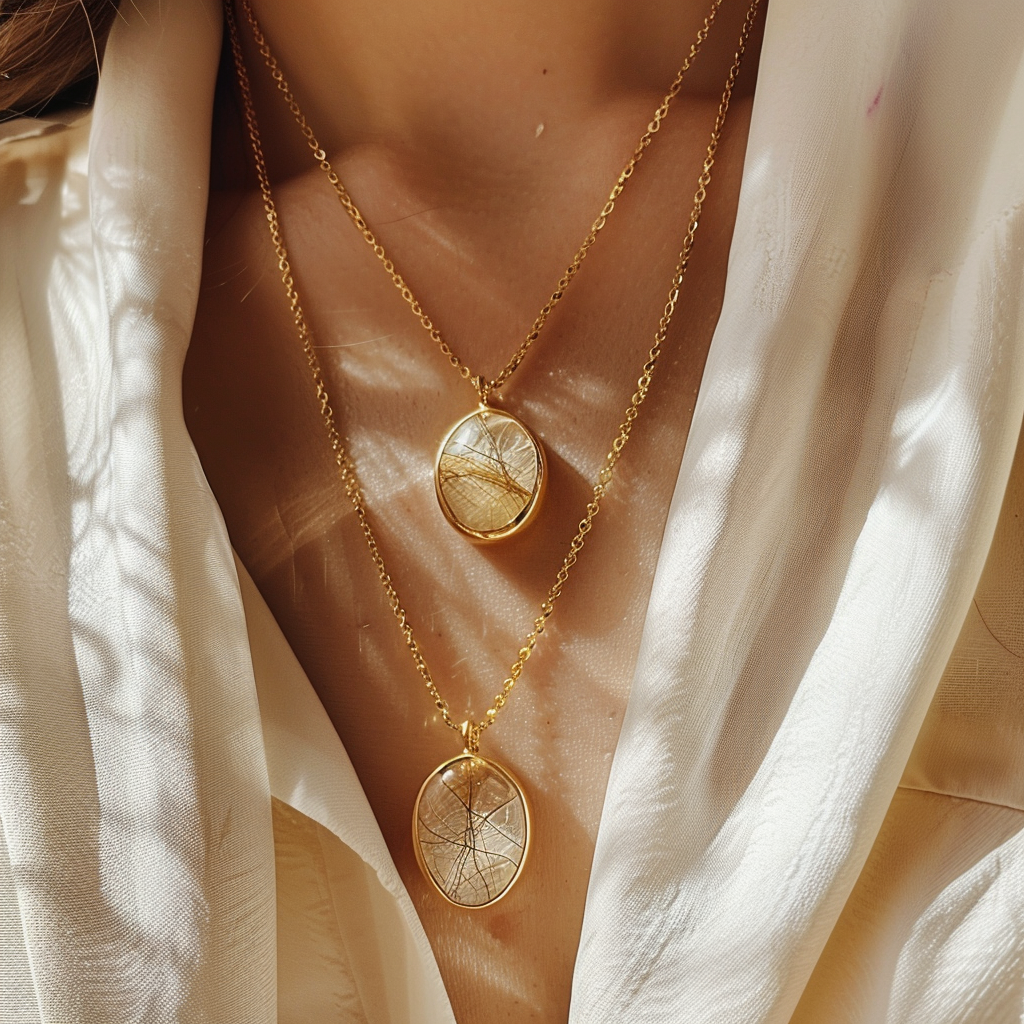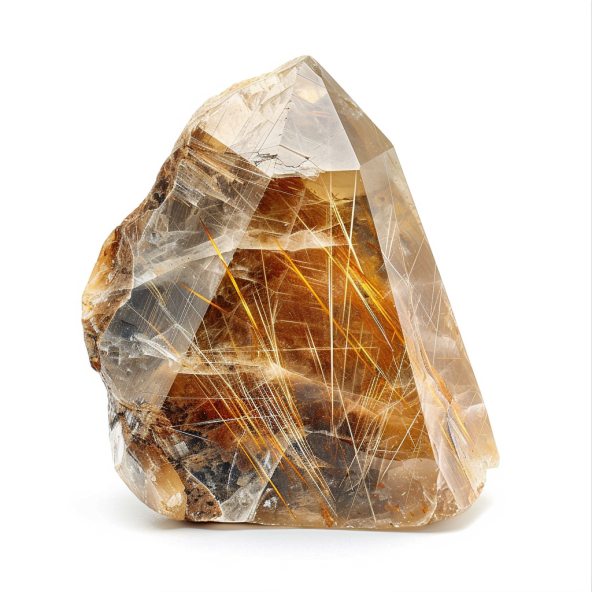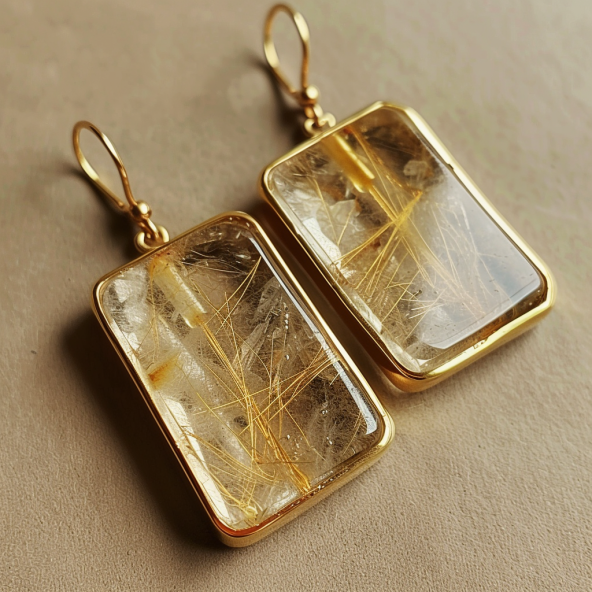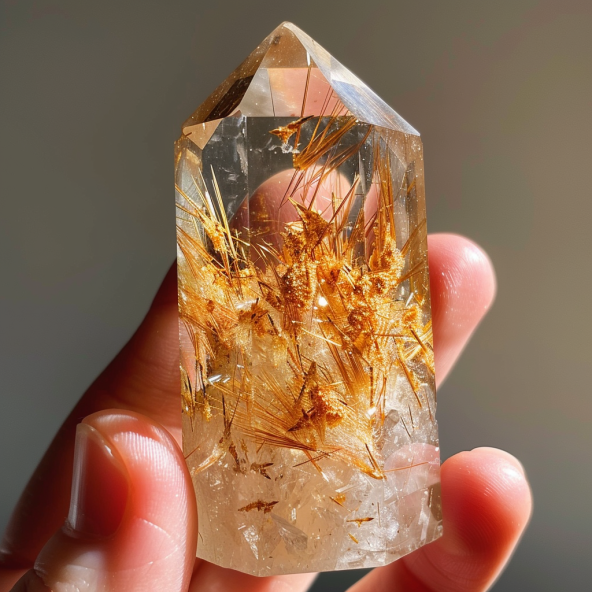FAQs on Rutilated Quartz Durability
Rutilated quartz is a unique and captivating gemstone, known for its golden, copper, or silver needle-like inclusions that add a distinct character to each piece. When considering rutilated quartz for jewelry, questions often arise regarding its durability. Understanding the durability of rutilated quartz is essential for making informed choices on how best to care for and enjoy this beautiful stone. Below, we address some of the most common questions in this FAQs on Rutilated Quartz Durability guide.

1. How durable is rutilated quartz for everyday wear?
Rutilated quartz ranks at 7 on the Mohs scale of hardness, which makes it fairly resistant to scratches from everyday materials. This hardness level means that rutilated quartz is suitable for most types of jewelry, such as earrings, pendants, and rings. However, while it is hard, it is not immune to chipping or breaking if hit with sufficient force. For jewelry pieces that endure frequent impacts, such as rings or bracelets, extra care should be taken to prevent damage.
2. Is rutilated quartz prone to scratches?
The durability of rutilated quartz is relatively high due to its hardness of 7 on the Mohs scale. This means it can withstand scratches from most household materials but can still be scratched by harder gemstones like topaz, sapphire, and diamond. It is advisable to store rutilated quartz jewelry separately or in soft pouches to avoid accidental scratching by harder gemstones.

3. Are the rutile inclusions inside rutilated quartz fragile?
The rutile inclusions within the quartz are typically composed of titanium dioxide, which measures between 6 and 6.5 on the Mohs scale. While these inclusions add to the beauty of rutilated quartz, they can also create minor internal stress points, making the stone slightly more susceptible to fractures if exposed to impact. However, these inclusions are generally well-protected within the quartz crystal, allowing the stone to maintain good overall durability.

4. Can rutilated quartz break easily?
While rutilated quartz is generally durable, it can chip or fracture if struck sharply or dropped on a hard surface. The rutile inclusions can create weak points within the quartz, which can contribute to potential breakage if not handled with care. For rings and bracelets that are worn frequently, a protective setting such as a bezel is recommended to minimize the risk of chipping.

5. How does rutilated quartz handle exposure to heat?
The durability of rutilated quartz extends to its stability when exposed to heat, but with limitations. While the gemstone can tolerate moderate heat, it should not be exposed to sudden and extreme temperature changes. Extreme heat could cause fractures, and sudden changes in temperature might lead to internal stress, affecting the stability of the gemstone. Therefore, it is recommended to keep rutilated quartz away from prolonged direct heat, such as in a hot car or near a heat source.
6. Is rutilated quartz resistant to chemicals?
In terms of chemical stability, rutilated quartz is relatively resistant to most household chemicals, making it safe to wear during day-to-day activities. However, it is best to avoid exposure to harsh chemicals, such as bleach or household cleaners, which could damage the surface of the stone. When cleaning rutilated quartz jewelry, always use mild soap, warm water, and a soft brush to protect the stone from damage.
7. What jewelry settings are best for enhancing the durability of rutilated quartz?
Given the moderate durability of rutilated quartz, it is wise to choose protective settings for jewelry that is likely to endure impacts. For rings, a bezel setting is ideal as it encircles the stone, providing extra protection. For earrings and pendants, more decorative settings are generally safe, as these pieces are less likely to be subjected to impacts. Additionally, avoiding prong settings for rings can help minimize the risk of chipping along the edges.
8. How should I store rutilated quartz jewelry to preserve its durability?
To maintain the durability of rutilated quartz, proper storage is key. Store rutilated quartz jewelry in a soft-lined jewelry box or a separate compartment away from harder gemstones to prevent scratching. Wrapping the piece in a soft cloth or placing it in a pouch can also protect it from accidental knocks and minimize the risk of chipping or breaking.
9. How often should I clean rutilated quartz jewelry?
Cleaning rutilated quartz jewelry regularly helps to maintain its beauty without compromising its durability. Clean your jewelry every few weeks using lukewarm water, mild soap, and a soft brush. Avoid using ultrasonic or steam cleaners, as the vibrations or high temperatures could potentially harm the inclusions or cause internal fractures.
10. Is rutilated quartz suitable for engagement rings?
While rutilated quartz can be used in engagement rings, it is essential to be aware of its moderate toughness. The durability of rutilated quartz means it is harder than many other gemstones, but it is still more prone to chipping than traditional engagement stones like diamond or sapphire. If choosing rutilated quartz for an engagement ring, a sturdy setting that offers additional protection is recommended, and care should be taken to avoid hard knocks.
Conclusion
The FAQs on Rutilated Quartz Durability cover some of the most common questions regarding the use and care of this beautiful gemstone. With a hardness of 7 on the Mohs scale, rutilated quartz offers good durability for various types of jewelry but requires some care to avoid damage, particularly to the delicate rutile inclusions. Our comprehensive FAQs on Rutilated Quartz Durability provide valuable tips, such as choosing appropriate settings, avoiding exposure to extreme conditions, and storing the gemstone properly, ensuring you can enjoy the unique beauty of rutilated quartz for many years to come.
Explore the Durability and Hardness of Rutilated Quartz to understand its strength, care needs, and lasting beauty.
